Search Result
Results for "
atherosclerotic
" in MedChemExpress (MCE) Product Catalog:
1
Biochemical Assay Reagents
3
Isotope-Labeled Compounds
| Cat. No. |
Product Name |
Target |
Research Areas |
Chemical Structure |
-
- HY-P2310A
-
|
|
Bacterial
Parasite
|
Infection
Cardiovascular Disease
|
|
Defensin HNP-1 human TFA is a Human neutrophil peptides (HNPs), involved in endothelial cell dysfunction at the time of early atherosclerotic development. Defensin HNP-1 human TFA exhibits broad antimicrobial and anti-leishmanial activities .
|
-

-
- HY-B0218
-
Orlistat
Maximum Cited Publications
10 Publications Verification
Tetrahydrolipstatin; Ro-18-0647
|
Fatty Acid Synthase (FASN)
Apoptosis
|
Metabolic Disease
Cancer
|
|
Orlistat (Tetrahydrolipstatin) is a well-known irreversible inhibitor of pancreatic and gastric lipases. Orlistat is also an inhibitor of fatty acid synthase (FASN), is used orally for long-term research of obesity [1]. Anti-atherosclerotic effect .
|
-
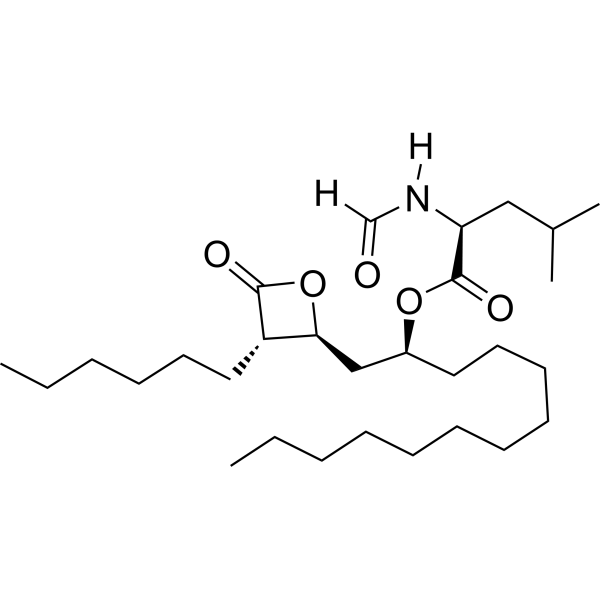
-
- HY-P9930
-
|
AMG 145
|
NF-κB
Ser/Thr Protease
Toll-like Receptor (TLR)
|
Cardiovascular Disease
Metabolic Disease
Inflammation/Immunology
Cancer
|
|
Evolocumab (AMG 145) is a human monoclonal antibody that inhibits PCSK9. Evolocumab is used in the study of hypercholesterolemia and atherosclerotic cardiovascular disease. Evolocumab binds to circulating PCSK9 protein and inhibits its binding to LDLR. Evolocumab has antioxidant and cytoprotective activities against H2O2-induced oxidative damage to endothelial cells. Evolocumab may also negatively regulate activation of the TLR-4/NF-κB signaling pathway to prevent inflammation .
|
-

-
- HY-P2310
-
|
|
Bacterial
Parasite
|
Infection
Cardiovascular Disease
|
|
Defensin HNP-1 human is a Human neutrophil peptides (HNPs), involved in endothelial cell dysfunction at the time of early atherosclerotic development. Defensin HNP-1 human exhibits broad antimicrobial and anti-leishmanial activities .
|
-
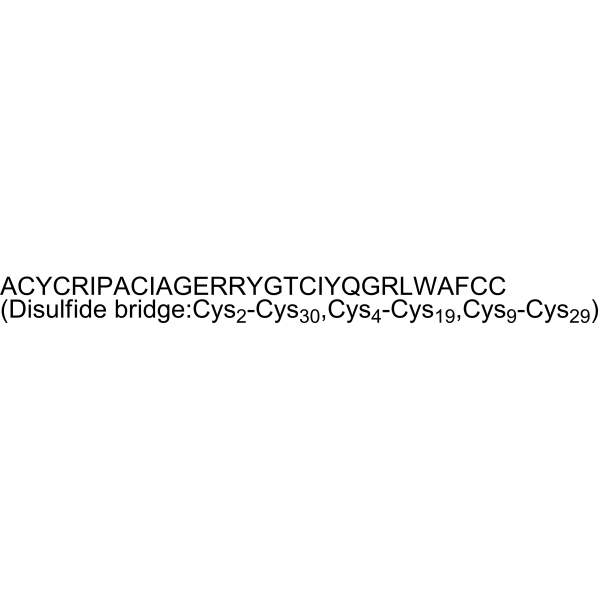
-
- HY-119770
-
|
SDZ-HDL 376
|
Others
|
Cardiovascular Disease
|
|
HDL376 is a scavenger receptor class B type I (SR-BI) inhibitor. HDL376 directly inhibits SR-BI-mediated lipid transport in cells and in liposomes reconstituted with purified SR-BI (IC50 = 0.22 μM). HDL376 can be used for the research of atherosclerotic coronary artery disease .
|
-
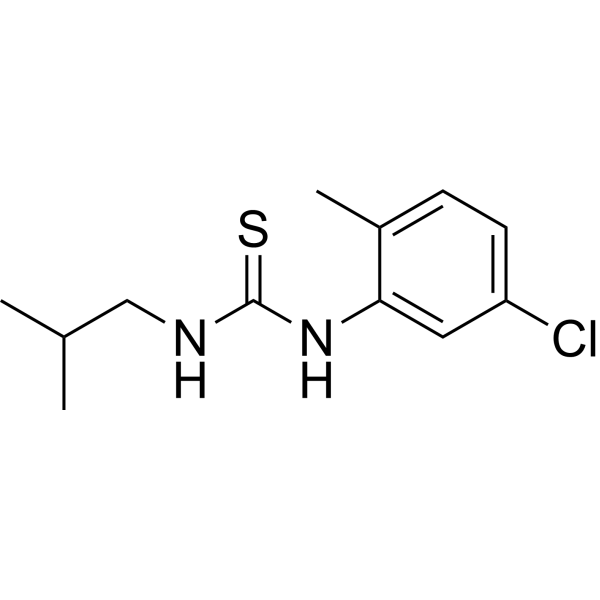
-
- HY-W010697
-
-
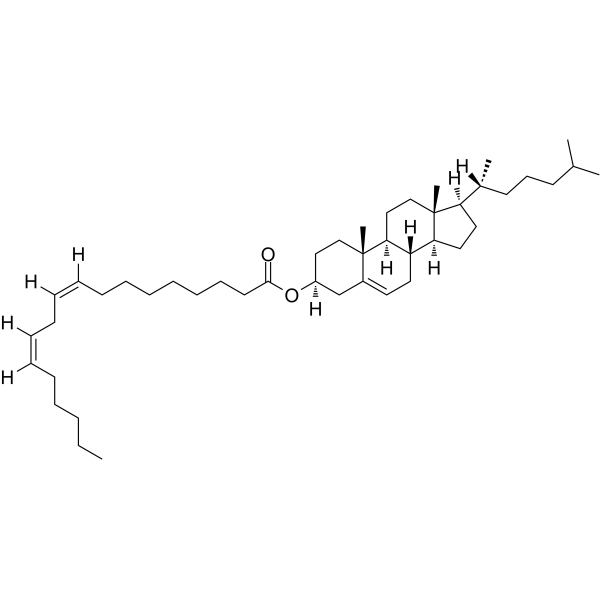
-
- HY-117006
-
|
1-{4-[2-(5-Methylfuran-2-yl)quinoline-4-carbonyl]piperazin-1-yl}ethan-1-one
|
Sirtuin
|
Cardiovascular Disease
|
|
E1231 is an orally active activator of Sirtuin 1 (SIRT1) (EC50=0.83 μM), to modulate cholesterol and lipid metabolism. E1231 interactes with SIRT1 (KD=9.61 μM) and deacetylated liver X receptor-alpha (LXRα), and increases ATP-binding cassette transporter A1 (ABCA1) expression. E1231 also reduces atherosclerotic plaque development in ApoE -/- mice model. E1231 can be used for research in cholesterol and lipid disorder-related diseases .
|
-
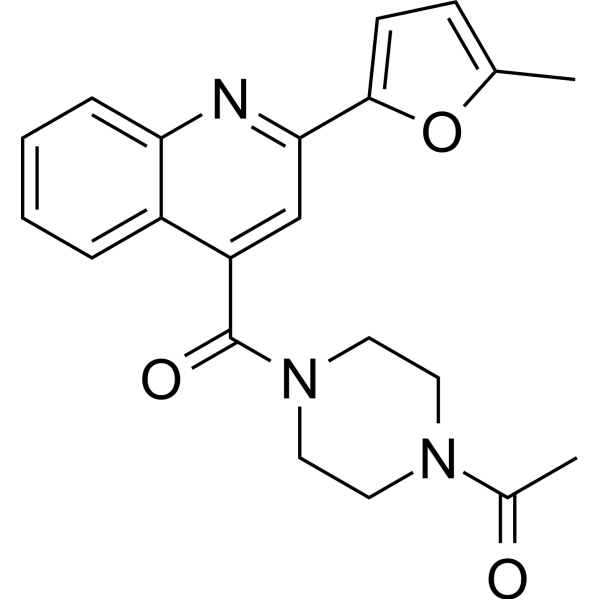
-
- HY-N1553
-
|
|
|
|
|
Pseudolaric acid D is a compound with oral activity that can be isolated from Pseudolarix kaempferi Gorden. Pseudolaric acid D can significantly improve lipid metabolism, reduce atherosclerotic lesion area, and alleviate atherosclerotic changes in vascular wall. Pseudolaric acid D significantly inhibits the inflammatory reaction .
|
-
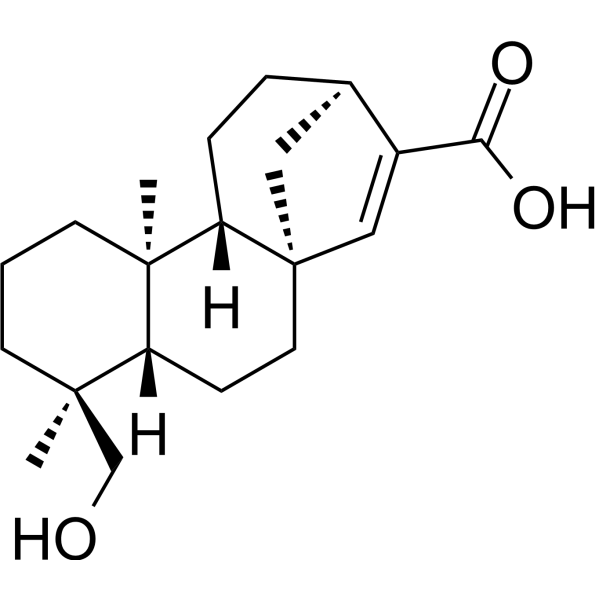
-
- HY-W013812
-
|
Linoleic Acid ethyl ester; Mandenol
|
Others
|
Cardiovascular Disease
|
Ethyl linoleate (Linoleic Acid ethyl ester) inhibit the development of atherosclerotic lesions and the expression of inflammatory mediators .
|
-
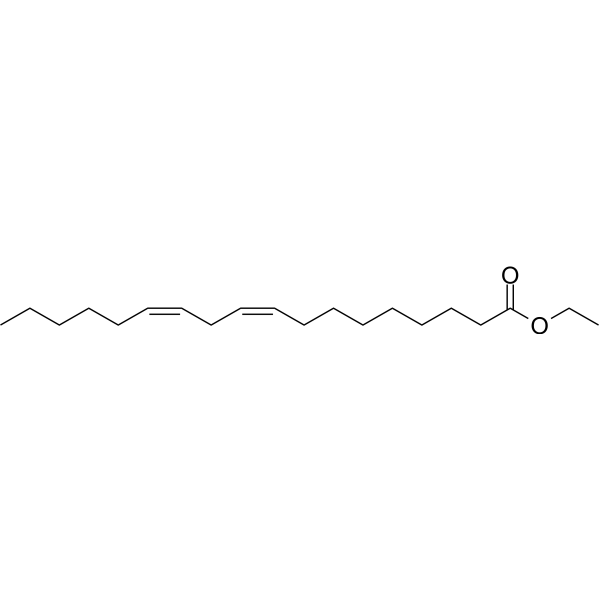
-
- HY-W041171
-
|
|
Endogenous Metabolite
|
Others
|
|
3-Chloro-L-tyrosine is a specific marker of myeloperoxidase-catalyzed oxidation, and is markedly elevated in low density lipoprotein isolated from human atherosclerotic intima.
|
-
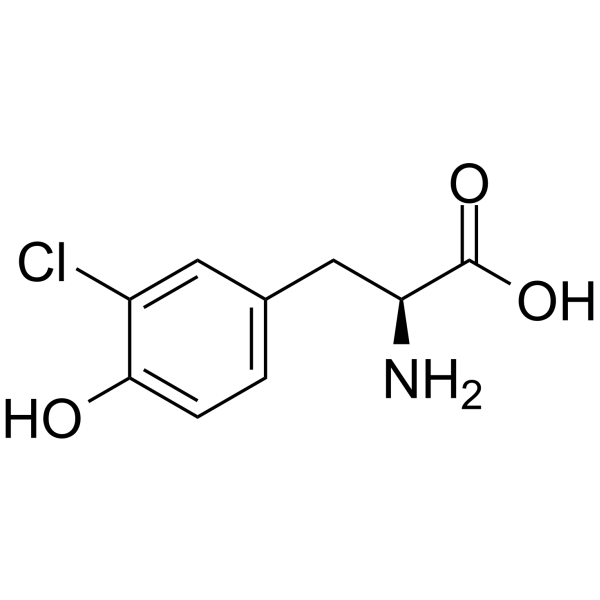
-
- HY-W013812S
-
|
Linoleic Acid-13C18 ethyl ester; Mandenol-13C18
|
Isotope-Labeled Compounds
|
Cardiovascular Disease
|
Ethyl linoleate- 13C18 is the 13C labeled Ethyl linoleate. Ethyl linoleate inhibit the development of atherosclerotic lesions and the expression of inflammatory mediators[1].
|
-

-
- HY-U00054
-
-
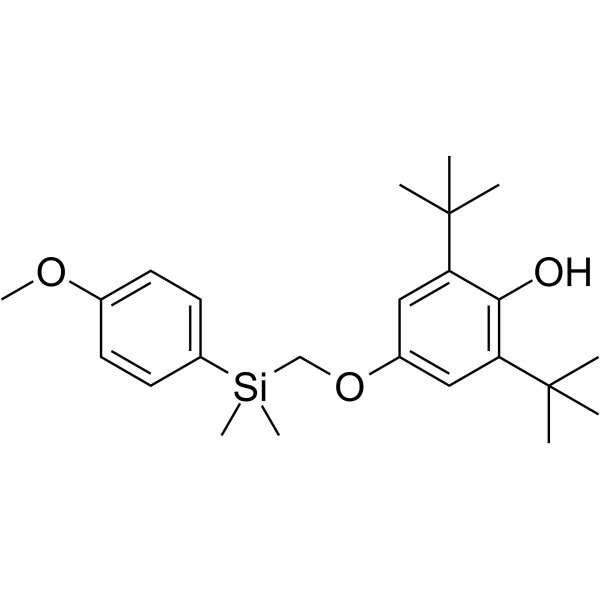
-
- HY-113870
-
|
|
Fluorescent Dye
|
Others
|
|
6-NBDG is a fluorescent glucose analogue, it can be used for fluorescence imaging and monitoring glucose transport and uptake. 6-NBDG can be used as a fluorescent probe for detecting macrophage-rich atherosclerotic plaques .
|
-

-
- HY-113420
-
|
|
Endogenous Metabolite
|
Metabolic Disease
|
|
11-Dehydro-thromboxane B2 is a platelet hemagglutinin. Thromboxane inhibition was assessed by urinary excretion levels of 11-Dehydro-thromboxane B2. 11-Dehydro-thromboxane B2 can be used in the study of atherosclerotic thrombosis .
|
-

-
- HY-107637
-
|
|
MMP
|
Cardiovascular Disease
|
|
ONO-4817 is a potent inhibitor of matrix metalloproteinase (MMP). Inhibition of matrix metalloproteinases (MMPs) is expected to suppress atherosclerotic neointimal proliferation and thus limits atheromatous plaque progression. ONO-4817 suppresses the development of aortic intimal hyperplasia in experimental hyperlipidemic rabbit .
|
-

-
- HY-W013812S2
-
|
Linoleic Acid ethyl ester-d2; Mandenol-d2
|
Isotope-Labeled Compounds
|
Cardiovascular Disease
|
|
Ethyl linoleate-d2 (Linoleic Acid ethyl ester-d2; Mandenol-d2) is the deuterium labeled Ethyl linoleate (HY-W013812). Ethyl linoleate (Linoleic Acid ethyl ester) inhibit the development of atherosclerotic lesions and the expression of inflammatory mediators .
|
-
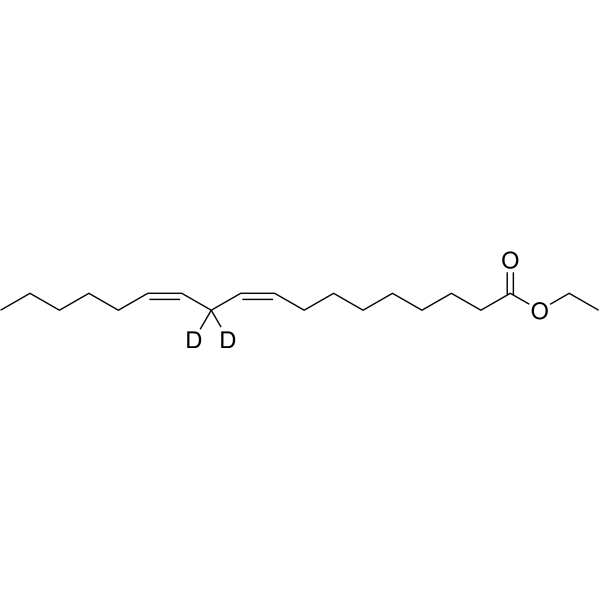
-
- HY-W041171S
-
|
|
Endogenous Metabolite
|
Others
|
|
3-Chloro-L-tyrosine- 13C6 is the 13C labeled 3-Chloro-L-tyrosine[1]. 3-Chloro-L-tyrosine is a specific marker of myeloperoxidase-catalyzed oxidation, and is markedly elevated in low density lipoprotein isolated from human atherosclerotic intima[2].
|
-
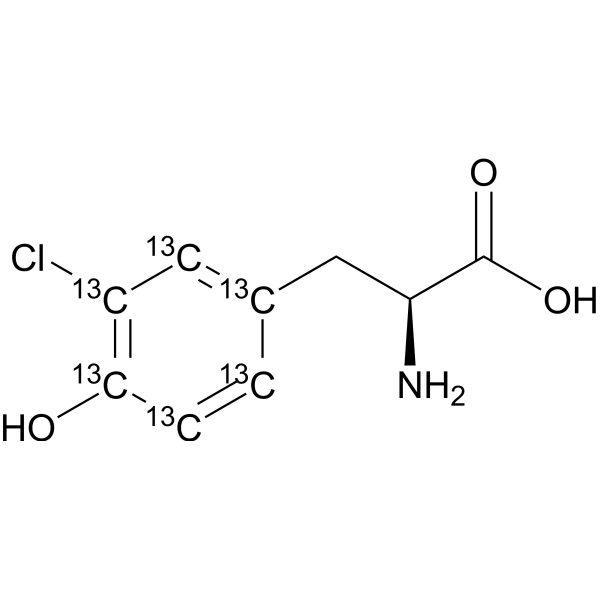
-
- HY-B0218R
-
|
Tetrahydrolipstatin (Standard); Ro-18-0647 (Standard)
|
Fatty Acid Synthase (FASN)
Apoptosis
|
Metabolic Disease
Cancer
|
|
Orlistat (Standard) is the analytical standard of Orlistat. This product is intended for research and analytical applications. Orlistat (Tetrahydrolipstatin) is a well-known irreversible inhibitor of pancreatic and gastric lipases. Orlistat is also an inhibitor of fatty acid synthase (FASN), is used orally for long-term research of obesity [1].?Anti-atherosclerotic?effect .
|
-

-
- HY-119265
-
|
|
Acyltransferase
|
Metabolic Disease
|
|
LDL-IN-4 (Compound 2) inhibits human acyl-CoA:cholesterol acyltransferase-1 and -2 activities. LDL-IN-4 inhibits copper-mediated low density lipoprotein (LDL) oxidation, with an IC50 of 3 μM. LDL-IN-4 has anti-atherosclerotic biological activity .
|
-
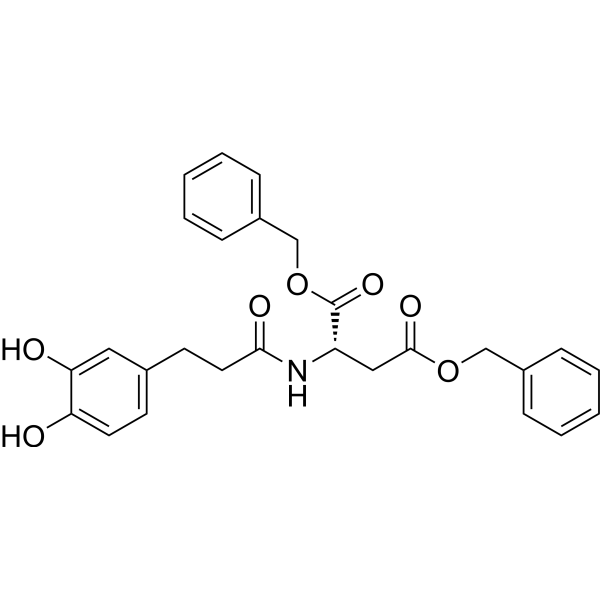
-
- HY-118486
-
|
|
Acyltransferase
|
Metabolic Disease
|
|
LDL-IN-1 (Compound 1) is an antioxidant, and is active against copper mediated LDL oxidation (IC50 = 52 μM). LDL-IN-1 is also an Acyl-CoA:cholesterol acyltransferase-1 and -2 (ACAT-1/2) inhibitor, with IC50s of 60 μM. LDL-IN-1 can be used for anti-atherosclerotic research .
|
-
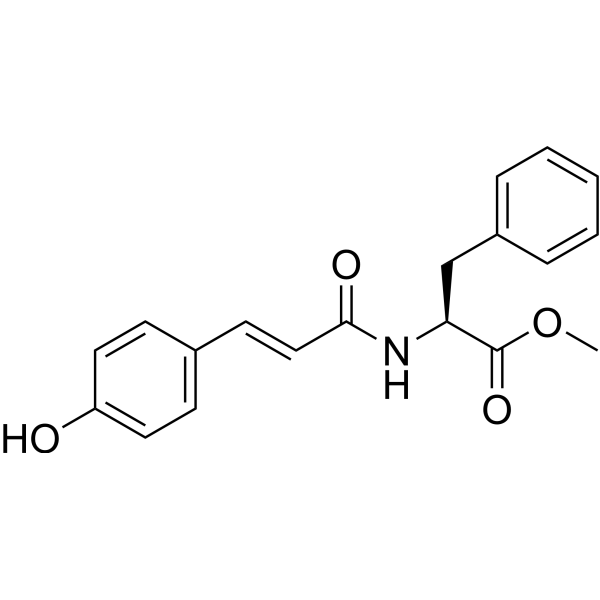
-
- HY-12403A
-
|
TXA127 acetate; Angiotensin (1-7) (acetate); Ang-(1-7) (acetate)
|
Angiotensin Receptor
Angiotensin-converting Enzyme (ACE)
Endogenous Metabolite
|
Cardiovascular Disease
Inflammation/Immunology
Endocrinology
|
|
Angiotensin 1-7 (Ang-(1-7)) acetate is an endogenous heptapeptide from the renin-angiotensin system (RAS) with a cardioprotective role due to its anti-inflammatory and anti-fibrotic activities in cardiac cells. Angiotensin 1-7 acetate inhibits purified canine ACE activity (IC50=0.65 μM). Angiotensin 1-7 acetate acts as a local synergistic modulator of kinin-induced vasodilation by inhibiting ACE and releasing nitric oxide. Angiotensin 1-7 acetate blocks Ang II-induced smooth muscle cell proliferation and hypertrophy and shows antiangiogenic and growth-inhibitory effects on the endothelium .
|
-
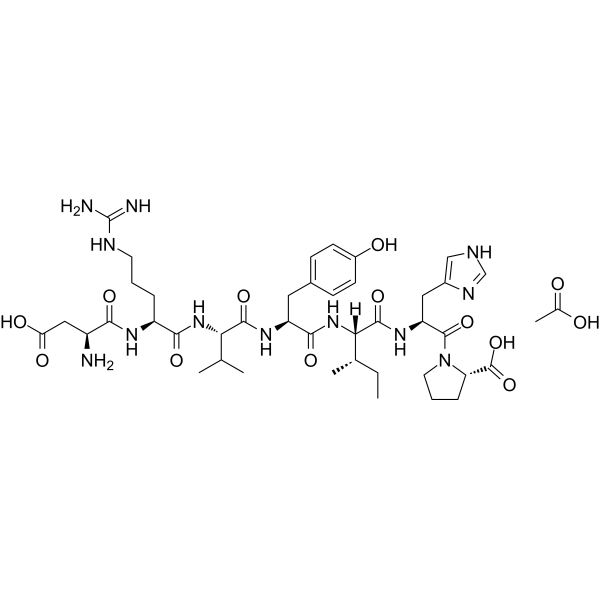
-
- HY-N0403
-
|
|
Apoptosis
|
Inflammation/Immunology
|
|
2,3,4',5-Tetrahydroxystilbene 2-O-β-D-glucoside (TSG) is an active product that can be extracted from Polygonum multiflorum Thunb. TSG has anti-inflammatory, antioxidative, anti-atherosclerotic, anti-apoptotic, and free radical scavenging activities, TSG is also indicated to facilitate long-term potentiation and learning and memory in both normal and pathological conditions .
|
-
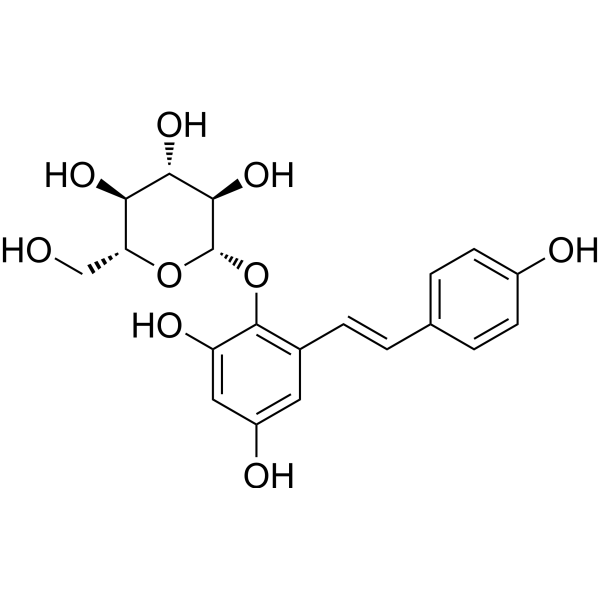
-
- HY-110247
-
|
|
TNF Receptor
NF-κB
|
Cardiovascular Disease
Inflammation/Immunology
|
|
TRAF-STOP inhibitor 6877002, is a selective inhibitor of CD40-TRAF6 interaction, compound VII, shows inhibition of NF-κB activation in RAW cells, extracted from patent WO2014033122A1 . TRAF-STOP 6877002 prevents the progression of established atherosclerosis in mice, reduces leukocyte recruitment and reduces macrophage activation; reduces macrophage proliferation in atherosclerotic plaques .
|
-
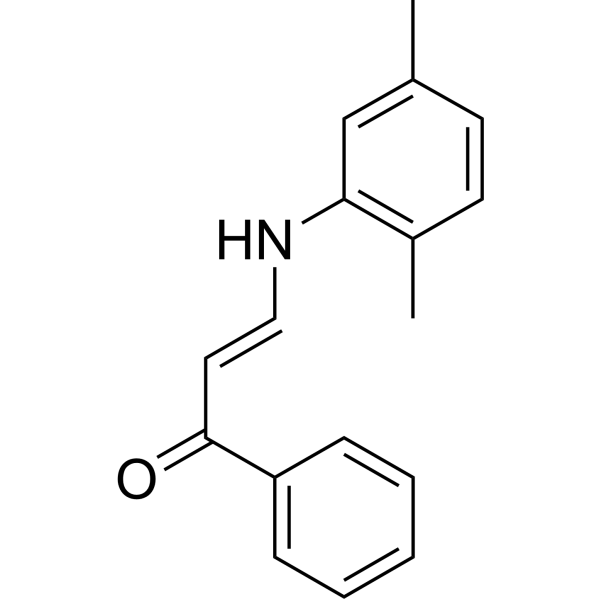
-
- HY-10835
-
DG-041
2 Publications Verification
|
Prostaglandin Receptor
|
Cardiovascular Disease
|
|
DG-041 is a potent, high affinity and selective EP3 receptor antagonist with IC50s of 4.6 nM and 8.1 nM in the binding and FLIPR assay, respectively. DG-041 inhibits PGE2 facilitation of platelet aggregation. DG-041 crosses the blood-brain barrier .
|
-
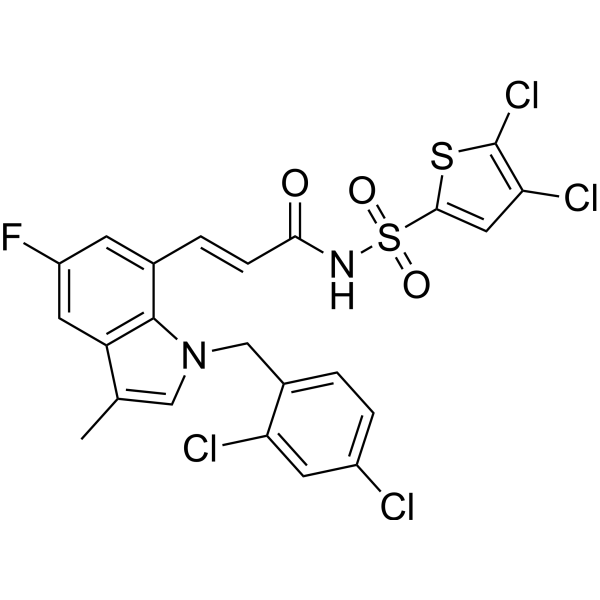
-
- HY-152221
-
|
|
Ser/Thr Protease
|
Metabolic Disease
|
|
PCSK9-IN-10 is a potent and orally active PCSK9 inhibitor with an IC50 value of 6.4 µM. PCSK9-IN-10 increases the expression of LDLR protein and decreases the expression of PCSK9. PCSK9-IN-10 reduces atherosclerosis progression. PCSK9-IN-10 has the potential for the research of hyperlipidemia .
|
-

-
- HY-155773
-
|
|
FAAH
Epoxide Hydrolase
|
Cardiovascular Disease
|
|
VU534 is a NAPE-PLD activator, with an EC50 of 0.30 μM. VU534 is dual inhibitors of FAAH and sEH (IC50 of 1.2 μM). VU534 increases efferocytosis in a NAPE-PLD dependent manner. VU534 has the potential for cardiometabolic diseases study [1] .
|
-
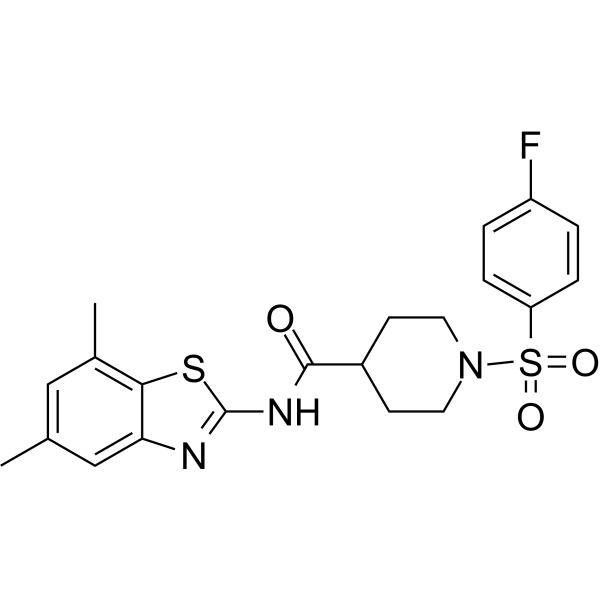
-
- HY-B0144A
-
|
NK-104
|
HMG-CoA Reductase (HMGCR)
Autophagy
Mitophagy
Apoptosis
|
Cardiovascular Disease
Neurological Disease
Metabolic Disease
Cancer
|
|
Pitavastatin (NK-104) is a potent hydroxymethylglutaryl-CoA (HMG-CoA) reductase inhibitor. Pitavastatin inhibits cholesterol synthesis from acetic acid with an IC50 of 5.8 nM in HepG2 cells. Pitavastatin is an efficient hepatocyte low-density lipoprotein-cholesterol (LDL-C) receptor inducer. Pitavastatin also possesses anti-atherosclerotic, anti-asthmatic, anti-osteoarthritis, antineoplastic, neuroprotective, hepatoprotective and reno-protective effects .
|
-
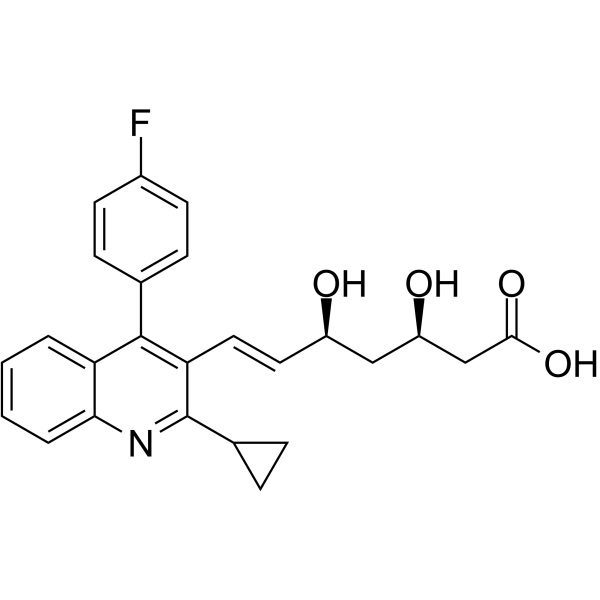
-
- HY-B0144B
-
|
NK-104 sodium
|
HMG-CoA Reductase (HMGCR)
Autophagy
Mitophagy
Apoptosis
|
Cardiovascular Disease
Neurological Disease
Metabolic Disease
Cancer
|
|
Pitavastatin (NK-104) sodium is a potent hydroxymethylglutaryl-CoA (HMG-CoA) reductase inhibitor. Pitavastatin sodium inhibits cholesterol synthesis from acetic acid with an IC50 of 5.8 nM in HepG2 cells. Pitavastatin sodium is an efficient hepatocyte low-density lipoprotein-cholesterol (LDL-C) receptor inducer. Pitavastatin sodium also possesses anti-atherosclerotic, anti-asthmatic, anti-osteoarthritis, antineoplastic, neuroprotective, hepatoprotective and reno-protective effects .
|
-
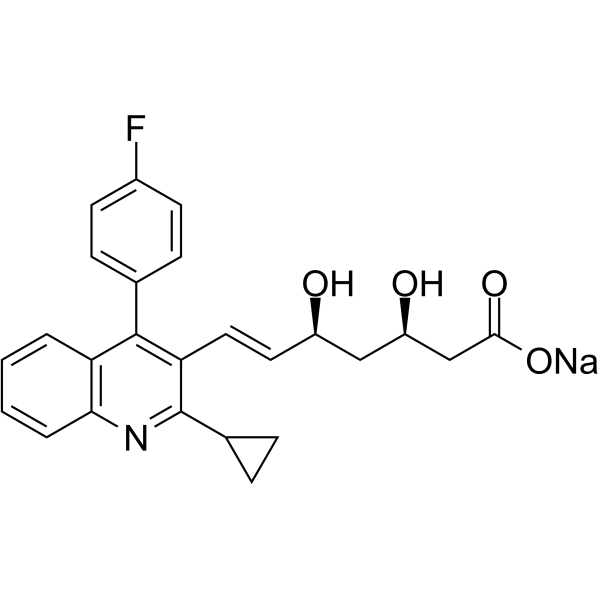
-
- HY-130502
-
|
Cholesterol beta-epoxide
|
Biochemical Assay Reagents
|
Others
|
|
Cholesterol 5beta,6beta-epoxide is an oxidative metabolite of cholesterol formed by free-radical and non-radical oxidation of cholesterol at the 5,6 double bond. Induces lactate dehydrogenase (LDH) release and apoptosis in macrophage-differentiated U937 cells. Cholesterol 5beta,6beta-epoxide has been found in human fatty streaks and advanced atherosclerotic lesions, but not in normal aortic tissue .
|
-
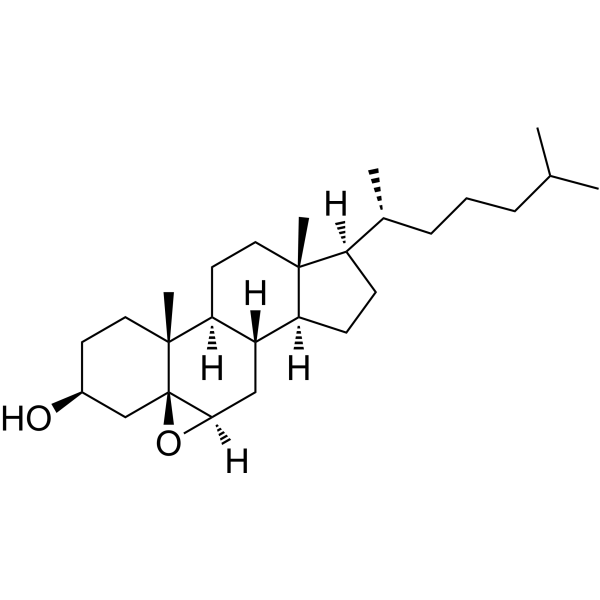
-
- HY-B0144
-
|
NK-104 hemicalcium; Pitavastatin hemicalcium
|
HMG-CoA Reductase (HMGCR)
Autophagy
Mitophagy
Apoptosis
|
Cardiovascular Disease
Neurological Disease
Metabolic Disease
Cancer
|
|
Pitavastatin Calcium (NK-104 hemicalcium) is a potent hydroxymethylglutaryl-CoA (HMG-CoA) reductase inhibitor. Pitavastatin Calcium (NK-104 hemicalcium) inhibits cholesterol synthesis from acetic acid with an IC50 of 5.8 nM in HepG2 cells. Pitavastatin Calcium is an efficient hepatocyte low-density lipoprotein-cholesterol (LDL-C) receptor inducer. Pitavastatin Calcium also possesses anti-atherosclerotic, anti-asthmatic, anti-osteoarthritis, antineoplastic, neuroprotective, hepatoprotective and reno-protective effects .
|
-

-
- HY-15589
-
GW9508
4 Publications Verification
|
Free Fatty Acid Receptor
Potassium Channel
|
Cardiovascular Disease
Metabolic Disease
Inflammation/Immunology
|
|
GW9508 is a potent and selective G protein-coupled receptors FFA1 (GPR40) and GPR120 agonist with pEC50s of 7.32 and 5.46, respectively. GW9508 shows ~100-fold selectivity for GPR40 over GPR120. GW9508 is inactive against other GPCRs, kinases, proteases, integrins and PPARs. GW9508 is a glucose-sensitive insulin secretagogue and an ATP-sensitive potassium (KATP) channels opener. Anti-inflammatory and anti-atherosclerotic activities .
|
-
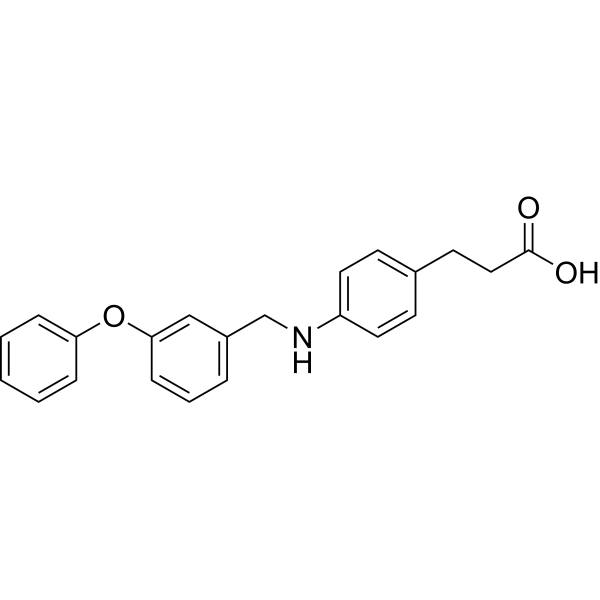
-
- HY-N2673
-
|
5-n-Heptadecylresorcinol; AR-C17
|
Sirtuin
|
Cardiovascular Disease
Metabolic Disease
|
|
5-Heptadecylresorcinol (AR-C17), a phenolic lipid component, is also an orally active mitochondrial protector. 5-Heptadecylresorcinol improves mitochondrial function via sirtuin3 signaling pathway, thus alleviates endothelial cell damage and apoptosis. 5-Heptadecylresorcinol induces sirtuin3-mediated autophagy. 5-Heptadecylresorcinol reduces the atherosclerotic plaques in the aortic root region of mice heart. 5-Heptadecylresorcinol can be used for research of atherosclerosis prevention and obesity .
|
-

-
- HY-B0683
-
|
17α,20-dimethyl-δ2-PGE1; ONO1206; OP1206
|
PGE synthase
|
Cardiovascular Disease
Inflammation/Immunology
|
|
Limaprost (OP1206) is a PGE1 analogue and a potent and orally active vasodilator. Limaprost increases blood flow and inhibits platelet aggregation. Limaprost pain relief, has antianginal effects, and can be used for ischaemic symptoms research .
|
-

-
- HY-135517
-
|
RXP-470
|
MMP
|
Cardiovascular Disease
|
|
RXP470.1 (RXP-470) is a potent, selective MMP-12 inhibitor with a Ki of 0.2 nM against human MMP-12. RXP470.1 is 2 to 4 orders of magnitude less potent against other MMPs. RXP470.1 significantly reduces atherosclerotic plaque cross-sectional area in mouse. RXP470.1 results in less complex plaques with increased smooth muscle cell:macrophage ratio, less macrophage apoptosis, increased cap thickness, smaller necrotic cores, and decreased incidence of calcification .
|
-
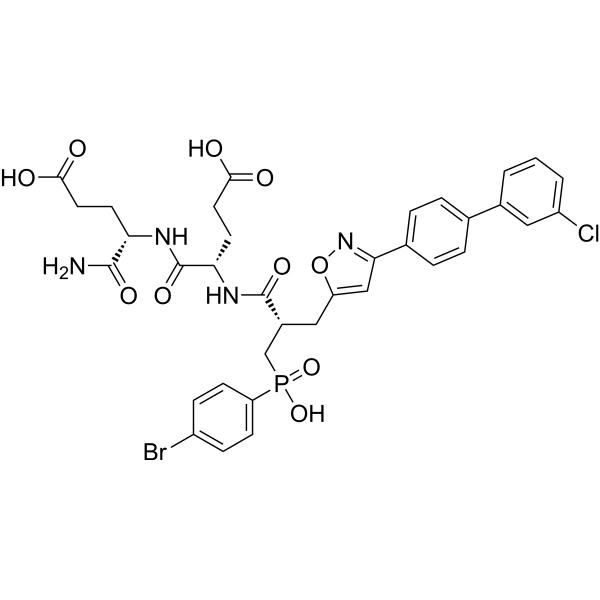
-
- HY-N1934
-
|
|
|
|
|
Dihydroberberine is a naturally occurring isoquinoline alkaloid with anti-inflammatory, anti-atherosclerotic, hypolipidemic and anti-tumor activities. Dihydroberberine inhibits the human ether-related gene (hERG) channel and significantly reduces the expression of heat shock protein 90 (Hsp90) and its interaction with hERG. Dihydroberberine also blocks the TLR4/MyD88/NF-κB signaling pathway to reduce pro-inflammatory cytokines and immunoglobulins, and has inhibitory effects on DSS (HY-116282C)-induced experimental colitis. Dihydroberberine also increases the sensitivity of lung cancer to sunitinib (HY-10255A), with synergistic efficacy .
|
-

-
- HY-100401A
-
|
CS-505
|
Acyltransferase
|
Cardiovascular Disease
|
|
Pactimibe sulfate (CS-505) is a dual ACAT1/2 inhibitor with IC50s of 4.9 μM and 3.0 μM, respectively. Pactimibe sulfate (CS-505) inhibits ACAT with IC50s of 2.0 μM, 2.7 μM, 4.7 μM in the liver, macrophages and THP-1 cells, respectively . Pactimibe sulfate (CS-505) noncompetitively inhibits oleoyl-CoA with a Ki value of 5.6 μM. Moreover, Pactimibe sulfate (CS-505) obviously inhibits cholesteryl ester formation with an IC50 of 6.7 μM. Pactimibe sulfate (CS-505) possesses anti-atherosclerotic potential with lowering plasma cholesterol activity .
|
-
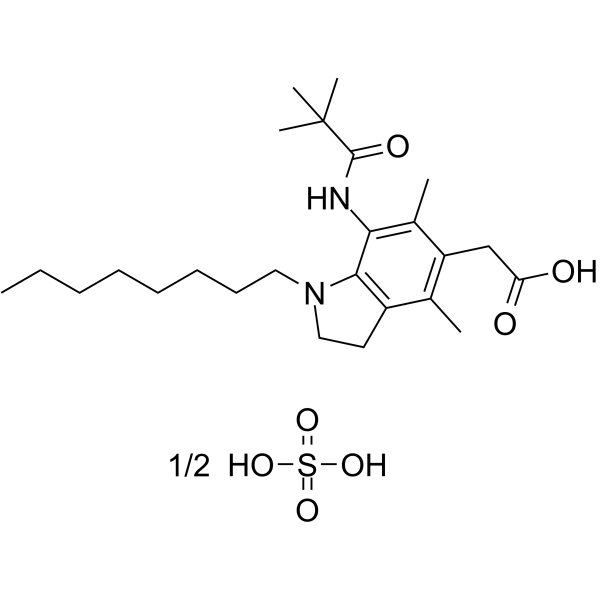
-
- HY-100401
-
|
CS-505 free base
|
|
|
|
Pactimibe (CS-505 free base) is a dual ACAT1/2 inhibitor with IC50s of 4.9 μM and 3.0 μM, respectively. Pactimibe (CS-505 free base) inhibits ACAT with IC50s of 2.0 μM, 2.7 μM, 4.7 μM in the liver, macrophages and THP-1 cells, respectively . Pactimibe (CS-505 free base) noncompetitively inhibits oleoyl-CoA with a Ki value of 5.6 μM. Moreover, Pactimibe (CS-505 free base) obviously inhibits cholesteryl ester formation with an IC50 of 6.7 μM. Pactimibe (CS-505 free base) possesses anti-atherosclerotic potential with lowering plasma cholesterol activity .
|
-

| Cat. No. |
Product Name |
Type |
-
- HY-113870
-
|
|
Fluorescent Dyes/Probes
|
|
6-NBDG is a fluorescent glucose analogue, it can be used for fluorescence imaging and monitoring glucose transport and uptake. 6-NBDG can be used as a fluorescent probe for detecting macrophage-rich atherosclerotic plaques .
|
| Cat. No. |
Product Name |
Type |
-
- HY-130502
-
|
Cholesterol beta-epoxide
|
Biochemical Assay Reagents
|
|
Cholesterol 5beta,6beta-epoxide is an oxidative metabolite of cholesterol formed by free-radical and non-radical oxidation of cholesterol at the 5,6 double bond. Induces lactate dehydrogenase (LDH) release and apoptosis in macrophage-differentiated U937 cells. Cholesterol 5beta,6beta-epoxide has been found in human fatty streaks and advanced atherosclerotic lesions, but not in normal aortic tissue .
|
| Cat. No. |
Product Name |
Target |
Research Area |
-
- HY-P2310A
-
|
|
Bacterial
Parasite
|
Infection
Cardiovascular Disease
|
|
Defensin HNP-1 human TFA is a Human neutrophil peptides (HNPs), involved in endothelial cell dysfunction at the time of early atherosclerotic development. Defensin HNP-1 human TFA exhibits broad antimicrobial and anti-leishmanial activities .
|
-
- HY-12403A
-
|
TXA127 acetate; Angiotensin (1-7) (acetate); Ang-(1-7) (acetate)
|
Angiotensin Receptor
Angiotensin-converting Enzyme (ACE)
Endogenous Metabolite
|
Cardiovascular Disease
Inflammation/Immunology
Endocrinology
|
|
Angiotensin 1-7 (Ang-(1-7)) acetate is an endogenous heptapeptide from the renin-angiotensin system (RAS) with a cardioprotective role due to its anti-inflammatory and anti-fibrotic activities in cardiac cells. Angiotensin 1-7 acetate inhibits purified canine ACE activity (IC50=0.65 μM). Angiotensin 1-7 acetate acts as a local synergistic modulator of kinin-induced vasodilation by inhibiting ACE and releasing nitric oxide. Angiotensin 1-7 acetate blocks Ang II-induced smooth muscle cell proliferation and hypertrophy and shows antiangiogenic and growth-inhibitory effects on the endothelium .
|
-
- HY-P2310
-
|
|
Bacterial
Parasite
|
Infection
Cardiovascular Disease
|
|
Defensin HNP-1 human is a Human neutrophil peptides (HNPs), involved in endothelial cell dysfunction at the time of early atherosclerotic development. Defensin HNP-1 human exhibits broad antimicrobial and anti-leishmanial activities .
|
| Cat. No. |
Product Name |
Target |
Research Area |
-
- HY-P9930
-
|
AMG 145
|
NF-κB
Ser/Thr Protease
Toll-like Receptor (TLR)
|
Cardiovascular Disease
Metabolic Disease
Inflammation/Immunology
Cancer
|
|
Evolocumab (AMG 145) is a human monoclonal antibody that inhibits PCSK9. Evolocumab is used in the study of hypercholesterolemia and atherosclerotic cardiovascular disease. Evolocumab binds to circulating PCSK9 protein and inhibits its binding to LDLR. Evolocumab has antioxidant and cytoprotective activities against H2O2-induced oxidative damage to endothelial cells. Evolocumab may also negatively regulate activation of the TLR-4/NF-κB signaling pathway to prevent inflammation .
|
| Cat. No. |
Product Name |
Category |
Target |
Chemical Structure |
| Cat. No. |
Product Name |
Chemical Structure |
-
- HY-W013812S
-
|
|
Ethyl linoleate- 13C18 is the 13C labeled Ethyl linoleate. Ethyl linoleate inhibit the development of atherosclerotic lesions and the expression of inflammatory mediators[1].
|
-

-
- HY-W013812S2
-
|
|
|
Ethyl linoleate-d2 (Linoleic Acid ethyl ester-d2; Mandenol-d2) is the deuterium labeled Ethyl linoleate (HY-W013812). Ethyl linoleate (Linoleic Acid ethyl ester) inhibit the development of atherosclerotic lesions and the expression of inflammatory mediators .
|
-

-
- HY-W041171S
-
|
|
|
3-Chloro-L-tyrosine- 13C6 is the 13C labeled 3-Chloro-L-tyrosine[1]. 3-Chloro-L-tyrosine is a specific marker of myeloperoxidase-catalyzed oxidation, and is markedly elevated in low density lipoprotein isolated from human atherosclerotic intima[2].
|
-

Your information is safe with us. * Required Fields.
Inquiry Information
- Product Name:
- Cat. No.:
- Quantity:
- MCE Japan Authorized Agent:













































